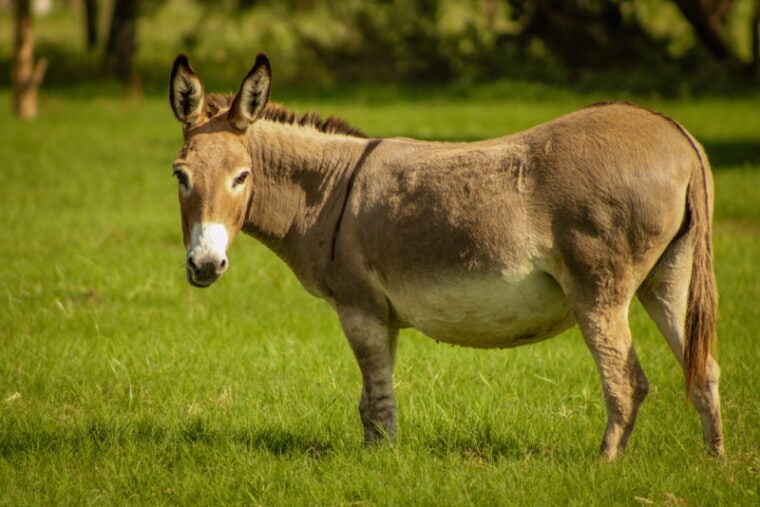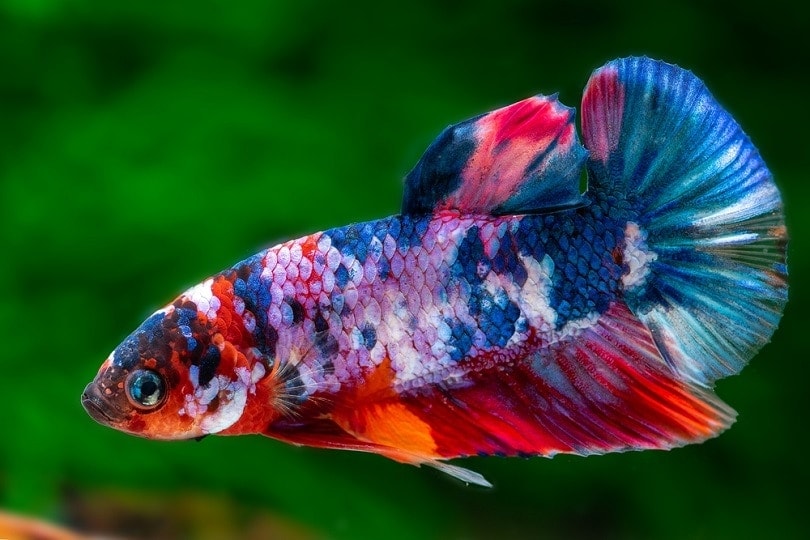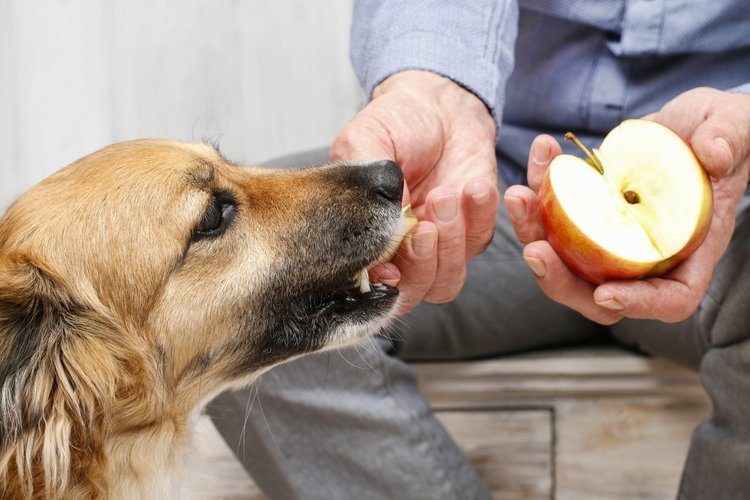
Humans have lived alongside and worked with donkeys for thousands of years. Evidence suggests these intelligent equines were first domesticated from the African wild donkeys in Egypt around 5,000 years ago, where they were likely used to carry heavy loads.
10,000 to 20,000 miniature donkeys live as companion animals in the United States. They usually live into their late 20s, but many make it into their 40s. These animals are truly lifetime companions. There are hundreds of donkey breeds, and these intelligent animals come in various sizes, from 35 to just under 60 inches tall.
As members of the Equidae family, donkeys can mate with horses to produce hinnies and mules. Donkeys can even mate with zebras, producing sweet partly-striped zonkeys! Keep reading to learn everything you need to know about donkey pregnancy.
How Long Do Donkey Pregnancies Last?
Donkey pregnancies typically last anywhere from 11–14 months! The average is about 12 months. Most only give birth to one foal at a time, although donkeys sometimes conceive twins.
Less than 2% of donkey pregnancies involve multiple fetuses, and both foals rarely survive after birth. Donkeys sometimes have difficulty getting pregnant, as they often have a low conception rate—they can be harder to breed than horses!

How Can I Tell if My Donkey Is Pregnant?
Some owners have problems determining whether or not their jenny has conceived, particularly early in their pet’s pregnancy. Pregnant donkeys don’t enter estrus on schedule. Most healthy adult jennies have estrus cycles that last anywhere from 20 to 40 days, with around 6 to 9 days spent in active estrus. If your donkey is due to come into heat and doesn’t, there’s a good chance she’s pregnant!
Pregnant donkeys gain weight, particularly in the lower abdomen. But donkeys don’t carry pregnancy weight evenly; one side is often far larger than the other. Your pet’s food intake will most likely gradually decrease as her foal begins taking up abdominal space, and the estrogen coursing through her body decreases her interest in food.
Do Pregnant Donkeys Need Extra Care?
A veterinarian should visit a pregnant donkey early in their pregnancy; it’s also the easiest way to tell if your pet is pregnant. Speak with your veterinarian for more information about ultrasounds and other important prenatal musts.
Pregnant donkeys generally don’t require special food or care, other than a few extra nutrients which can easily be incorporated into your pet’s diet with a nutrient-balancing product. But most jennies need extra food to power through the last 3 months of pregnancy. Stick with high-quality hay and other nutritious options.
Prepare a place for your jenny to give birth about 1 month ahead of time and allow her to become accustomed to the space. Make sure it’s clean and has been recently disinfected to prevent the foal from picking up any transmissible diseases or infections. Fresh straw tends to be the best option for bedding as shavings can irritate foals’ delicate skin and eyes.

How Can I Tell if My Donkey Is Ready to Give Birth?
While it can be tricky to figure out if your donkey is pregnant early on, it’s usually pretty simple to identify late-stage pregnant mares and estimate where they are in the gestation process. Around 3 or 4 weeks before your donkey gives birth, her udders will begin to swell and fill with milk, and her pelvic bones will start to relax.
About a week after that, many jennies start exhibiting behavioral changes. Some become restless, and others don’t want to be bothered by humans. Some jennies begin to secrete small amounts of milk a week or so before the big day. About 2 days before the big event, jennies often become unfriendly and actively avoid contact with people.
Most begin regularly producing milk around this time. In the 24 to 48 hours immediately before parturition, your donkey’s udders will start making colostrum drops that resemble waxy secretions. Your donkey’s vulva will likely become swollen at some point in the hours before she gives birth. Jennies often have trouble relaxing and eating in the last days of their pregnancies.

Do I Need to Do Anything During the Birth?
Not usually, but plan to be present throughout the entire process to ensure things are moving in the right direction. Once the active birthing process gets underway, things usually progress quickly. Most donkeys foal within 40 minutes of going into labor, and complications are generally rare.
Jennies often foal at night, and there’s often little warning, so start preparing for the big event once you notice signs such as udder swelling.
If this will be your first time helping a donkey give birth, consider making an appointment with your veterinarian to discuss how to identify emergencies and what steps to take in the event of serious complications. Make sure you know how a normal birth proceeds, as you’ll need to recognize if something is off so you can reach out for help in an emergency.

Discuss with your veterinarian how to identify a detached placenta and what to do if you’re faced with one of these dreaded red bag deliveries. A red bag delivery occurs when a jenny’s placenta detaches from the uterine wall and is expelled while the foal is still inside its mother. You have to be confident about which steps to take to deal with this dangerous situation, as immediate intervention is usually required to keep the foal from dying of oxygen deprivation.
Jennies typically prefer to give birth lying down. Foals are usually born with their heads between their forelegs. If your jenny decides to stand during the process, you’ll need to catch the foal to keep the umbilical cord from breaking. Wipe away any membranes covering your foal’s nostrils to ensure they can breathe.
After the birthing process is complete, your jenny will bathe her baby. Most foals start attempting to stand and feed within a few hours. In most cases, the after-birth passes without incident around 1 hour after foaling. Reach out to your veterinarian if the placenta hasn’t been expelled after 2 hours.
How Do I Take Care of the Newborn?
Most of the time, things progress as nature intended, and there’s not much you need to do. Take a quick look at the foal to make sure their nostrils are clear of mucus and their gums are starting to turn light pink.
The foal’s eyes should be clear and open, and the newborn should take around 60 breaths per minute. Some jennies nudge their babies to encourage them to nurse, while others don’t. However, newborns need to start eating within 2 to 4 hours after birth and should consume at least 1 liter of colostrum within their first 12 hours, or they’ll miss out on essential antibodies. To ensure it’s healthy, take the foal to the vet the next day.

Conclusion
Donkeys tend to have about 1 foal a year, as gestation lasts anywhere from 11 to 14 months, and most donkey pregnancies take around 12 months. Donkeys typically give birth quite quickly, and the active birthing process often takes less than 40 minutes. While they don’t usually need assistance delivering their young, reach out to your veterinarian if your donkey’s placenta hasn’t passed within two hours of giving birth. Your jenny’s estrus cycle will usually start up again 5 to 13 days after she delivers her foal.
Featured Image Credit: Gerardo Cabrera Molina, Shutterstock







